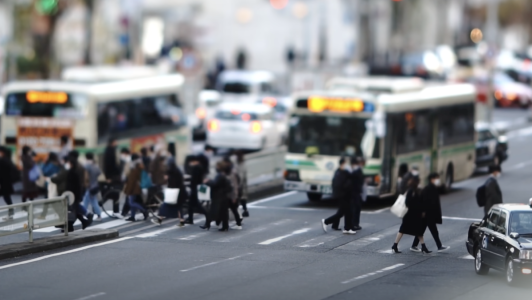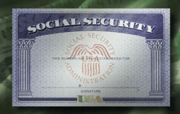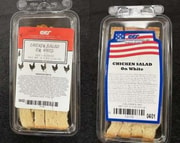Unlock up to $2,000 a month for your family—No catch! Find out if you're eligible
- Replies 0
Navigating the financial landscape can be daunting, especially when unexpected expenses arise or the economy takes a turn.
But what if there was a way to alleviate some of that stress with a monthly cash infusion, no strings attached?
For many American families, this isn't just a wishful thought—it's a reality that's within reach, thanks to the rise of Guaranteed Basic Income (GBI) programs across the country.
Basic income is a system in which individuals receive regular cash payments aimed at maintaining a minimum standard of living.
The recipients and eligibility requirements differ based on the specific model in place, with Universal Basic Income (UBI) and Guaranteed Basic Income (GBI) being two of the most recognized approaches.
UBI, true to its name, distributes recurring payments to all individuals—regardless of their income level, employment status, or other conditions.
These payments come with no requirements or restrictions and are generally uniform in amount, going to both wealthy and low-income individuals without the need to qualify.

Understanding Guaranteed Basic Income
On the other hand, Guaranteed Basic Income is a form of financial assistance designed to ensure that individuals and families can maintain a basic standard of living.
Unlike traditional welfare programs, GBI provides regular, conditional cash payments to those who qualify, offering a financial safety net that empowers recipients to use the funds as they see fit.
The concept of GBI is gaining traction in the United States as a means to combat poverty and provide a stable foundation for those in need.
Over 100 US cities have tested out GBI programs since 2019, showing that the movement is growing, and the potential benefits are becoming more widely recognized.
Also read: Apply now for a new program offering $725 monthly payments
Eligibility and How to Qualify
Eligibility for GBI programs varies depending on the specific initiative. Most programs target individuals such as the homeless or new and expecting mothers, and families who fall under the federal poverty line, with criteria often including residency requirements and income levels.
The goal is to support those who are struggling to meet their basic needs, offering a leg up rather than a handout.
The monthly payments can range from $50 to $2,000, with the duration of the programs varying as well. Some initiatives provide support for a set period, such as 12 or 24 months, while others have longer terms or are designed as ongoing pilots.
Source: Professor Dave Explains / Youtube.
The Impact of Basic Income Programs
The impact of these programs can be profound. By providing a steady income stream, GBI can help families cover essential expenses, reduce financial stress, and even invest in opportunities that were previously out of reach, such as education or starting a business.
Moreover, GBI programs challenge the traditional welfare model by removing the stigma associated with receiving assistance.
There are no job requirements or drug tests—just the trust that recipients will use the funds to improve their circumstances.
States Leading the Way
Several states have embraced the idea of GBI, with California leading the charge.
Programs like Los Angeles County's “Breathe” and Alameda County's United Way Bay Area's GBI pilot are providing substantial monthly payments to low-income households.
Other states, including Colorado, Georgia, and Illinois, have also launched their own initiatives, each with unique features tailored to their communities' needs.
The Debate Around Basic Income
As with any significant policy proposal, GBI has its critics. Some argue that unconditional cash payments could discourage work or become too costly for governments to sustain.

Others worry about the potential for inefficiencies or the fairness of distributing funds to those who may not need them.
Despite these concerns, the evidence from pilot programs suggests that GBI can have a positive impact on recipients' lives without the negative side effects that opponents fear. As more data becomes available, the debate will continue to evolve.
How to Get Involved
If you're interested in finding out whether you're eligible for a GBI program, the first step is to research the initiatives available in your state or city.
Many programs have specific application periods and criteria, so it's essential to stay informed and apply when the opportunity arises.
Partial Basic Income
A lesser-known form of basic income is Partial Basic Income, which offers regular payments that cover only a portion of a person's essential living expenses rather than the full cost of living.
Unlike traditional welfare programs, basic income gives recipients the freedom to choose how to use their funds. Most individuals put the money toward necessities like rent, food, transportation, or debt payments.
Other related income models include:
Source: CBS News / Youtube.
Debates on Basic Income
While basic income has served as a financial lifeline for many, it remains a polarizing issue among the public and policymakers.
Supporters of Universal Basic Income (UBI) see it as a way to streamline welfare, reduce poverty, and address job loss caused by automation.
Critics, however, argue the cost of such programs is too high and question whether high-income individuals should receive payments at all.
Guaranteed Basic Income (GBI) is often viewed as a more financially sustainable option, but skeptics say the added requirements can drive up administrative costs and make implementation overly complex.
Some Republican-led states have taken steps to block basic income programs, arguing that consistent payments could reduce the incentive to work. Iowa recently prohibited GBI programs, following a similar move by Arizona in February.
Still, basic income initiatives remain active in several US states.
Read next: Extra cash incoming? Here’s who may qualify for monthly payments of $500

Have you or someone you know participated in a GBI program? What was the experience like? Do you have questions about how these programs work or how to find out if you're eligible? Share your thoughts, experiences, and questions in the comments below!
But what if there was a way to alleviate some of that stress with a monthly cash infusion, no strings attached?
For many American families, this isn't just a wishful thought—it's a reality that's within reach, thanks to the rise of Guaranteed Basic Income (GBI) programs across the country.
Basic income is a system in which individuals receive regular cash payments aimed at maintaining a minimum standard of living.
The recipients and eligibility requirements differ based on the specific model in place, with Universal Basic Income (UBI) and Guaranteed Basic Income (GBI) being two of the most recognized approaches.
UBI, true to its name, distributes recurring payments to all individuals—regardless of their income level, employment status, or other conditions.
These payments come with no requirements or restrictions and are generally uniform in amount, going to both wealthy and low-income individuals without the need to qualify.

Guaranteed Basic Income programs are providing financial assistance to low-income families in over 100 US cities, with some offering up to $2,000 per month. Image source: Professor Dave Explains / Youtube.
Understanding Guaranteed Basic Income
On the other hand, Guaranteed Basic Income is a form of financial assistance designed to ensure that individuals and families can maintain a basic standard of living.
Unlike traditional welfare programs, GBI provides regular, conditional cash payments to those who qualify, offering a financial safety net that empowers recipients to use the funds as they see fit.
The concept of GBI is gaining traction in the United States as a means to combat poverty and provide a stable foundation for those in need.
Over 100 US cities have tested out GBI programs since 2019, showing that the movement is growing, and the potential benefits are becoming more widely recognized.
Also read: Apply now for a new program offering $725 monthly payments
Eligibility and How to Qualify
Eligibility for GBI programs varies depending on the specific initiative. Most programs target individuals such as the homeless or new and expecting mothers, and families who fall under the federal poverty line, with criteria often including residency requirements and income levels.
The goal is to support those who are struggling to meet their basic needs, offering a leg up rather than a handout.
The monthly payments can range from $50 to $2,000, with the duration of the programs varying as well. Some initiatives provide support for a set period, such as 12 or 24 months, while others have longer terms or are designed as ongoing pilots.
Source: Professor Dave Explains / Youtube.
The Impact of Basic Income Programs
The impact of these programs can be profound. By providing a steady income stream, GBI can help families cover essential expenses, reduce financial stress, and even invest in opportunities that were previously out of reach, such as education or starting a business.
Moreover, GBI programs challenge the traditional welfare model by removing the stigma associated with receiving assistance.
There are no job requirements or drug tests—just the trust that recipients will use the funds to improve their circumstances.
States Leading the Way
Several states have embraced the idea of GBI, with California leading the charge.
Programs like Los Angeles County's “Breathe” and Alameda County's United Way Bay Area's GBI pilot are providing substantial monthly payments to low-income households.
Other states, including Colorado, Georgia, and Illinois, have also launched their own initiatives, each with unique features tailored to their communities' needs.
The Debate Around Basic Income
As with any significant policy proposal, GBI has its critics. Some argue that unconditional cash payments could discourage work or become too costly for governments to sustain.

The eligibility for these payments varies by program, which may include specific residency requirements, income levels, and other criteria. Image source: Allef Vinicius / Unsplash.
Others worry about the potential for inefficiencies or the fairness of distributing funds to those who may not need them.
Despite these concerns, the evidence from pilot programs suggests that GBI can have a positive impact on recipients' lives without the negative side effects that opponents fear. As more data becomes available, the debate will continue to evolve.
How to Get Involved
If you're interested in finding out whether you're eligible for a GBI program, the first step is to research the initiatives available in your state or city.
Many programs have specific application periods and criteria, so it's essential to stay informed and apply when the opportunity arises.
| California |
|
| Colorado |
|
| Georgia |
|
| Illinois |
|
| Iowa |
|
| Louisiana |
|
| Massachusetts |
|
| Michigan |
|
| Minnesota |
|
| Mississippi |
|
| Missouri |
|
| New York |
|
| Oregon |
|
| Pennsylvania |
|
| Texas |
|
| Virginia |
|
Partial Basic Income
A lesser-known form of basic income is Partial Basic Income, which offers regular payments that cover only a portion of a person's essential living expenses rather than the full cost of living.
Unlike traditional welfare programs, basic income gives recipients the freedom to choose how to use their funds. Most individuals put the money toward necessities like rent, food, transportation, or debt payments.
Other related income models include:
- Conditional Basic Income
- Universal Dividend
- Citizen’s Income
- Social Dividend
- Work-Linked Basic Income
- Transitional Basic Income
- Emergency Basic Income
Source: CBS News / Youtube.
Debates on Basic Income
While basic income has served as a financial lifeline for many, it remains a polarizing issue among the public and policymakers.
Supporters of Universal Basic Income (UBI) see it as a way to streamline welfare, reduce poverty, and address job loss caused by automation.
Critics, however, argue the cost of such programs is too high and question whether high-income individuals should receive payments at all.
Guaranteed Basic Income (GBI) is often viewed as a more financially sustainable option, but skeptics say the added requirements can drive up administrative costs and make implementation overly complex.
Some Republican-led states have taken steps to block basic income programs, arguing that consistent payments could reduce the incentive to work. Iowa recently prohibited GBI programs, following a similar move by Arizona in February.
Still, basic income initiatives remain active in several US states.
Read next: Extra cash incoming? Here’s who may qualify for monthly payments of $500
Key Takeaways
- Guaranteed Basic Income programs are providing financial assistance to low-income families in over 100 US cities, with some offering up to $2,000 per month.
- The eligibility for these payments varies by program, which may include specific residency requirements, income levels, and other criteria.
- Critics of basic income programs argue that they can discourage work and lead to reliance on government support, while proponents see them as a tool to combat poverty and the effects of job automation.
- Despite some Republican-led states moving to ban Guaranteed Basic Income programs, many cities and states continue to roll out and extend these initiatives, recognising their potential benefits.
Have you or someone you know participated in a GBI program? What was the experience like? Do you have questions about how these programs work or how to find out if you're eligible? Share your thoughts, experiences, and questions in the comments below!






